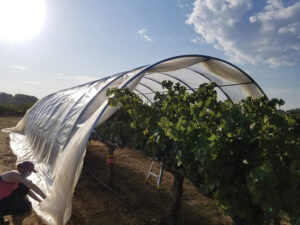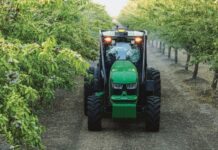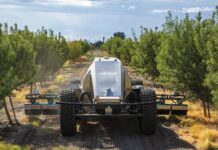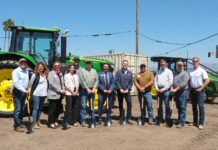
In early June, the West Coast Smoke Exposure Task Force (WCSETF) hosted its fourth annual Smoke Summit to discuss the latest findings and advancements as they relate to the impacts of wildfire smoke on the wine industry and to share updates on crop insurance coverage options and Task Force priorities.
Research on the impacts of wildfire smoke has been a top priority for the west coast wine industry since 2018. In each of the past five fiscal years, Congress has funded wildfire smoke research through USDA-ARS and in partnership with key researchers at land grant universities in California, Oregon and Washington. While a lot of progress has been made, there is still a lot of work to be done in terms of research, which is why advocating for this funding continues to be a top priority.
The annual summit featured presentations from leading researchers Cole Cerrato from Oregon State University, Tom Collins from Washington State University, Anita Oberholster from UC Davis and Arran Rumbaugh from USDA-ARS. The research presented included a wide range of topics, such as sensor networks, sensory analysis, risk modeling, barrier spray strategies and best practices for sampling and testing for smoke exposure.

Rumbaugh kicked off the research discussion reviewing the controlled smoke chamber studies she’s been conducting to analyze grape sensory attributes and chemical composition after differing levels of smoke exposure. Cerrato reported on Oregon State’s investigation into thiophenols’ recognition thresholds for ashy flavors in impacted wine. His lab, along with Collins’, is developing sensitive, replicable methods for measuring these compounds. Collins detailed progress from the USDA-SCRI smoke exposure research grant, which involves 17 researchers across various institutions, including WSU, OSU and UC Davis. The grant, now in its third year, focuses on four key elements:
• Developing low-cost air quality monitoring networks and models that assess the risk to grape and wine quality based on smoke plume characteristics.
• Understanding smoke impacts on grapevine health and developing tools and strategies to support growers in making timely decisions.
• Measuring free and bound smoke compounds in grapes and wine to assess exposure risk.
• Evaluating the effectiveness of mitigation actions to manage smoke exposure risk.
Anita Oberholster provided insights into dealing with smoke and ash in vineyards and shared the latest findings with barrier sprays to protect grapes from absorbing volatile phenols. Oberholster also emphasized the importance of thorough sampling and provided best practices for collecting and storing samples.
While significant progress has been made in wildfire smoke research, there is still a lot to learn. Next steps include defining standardized sampling methods and thresholds for smoke exposure compounds tailored to various regions, varietals, fuel types, production stages, management or mitigation efforts, processing and storage situations.
To spearhead some of these these efforts, funding is being allocated for a new research chemist through ARS who will be dedicated to improving industry risk management. Continued collaboration with university partners, USDA Climate Hubs, USDA Forest Service, state and local agencies, international collaborators and industry will enhance the monitoring, modeling, prediction and quantification of smoke taint risks.
New County-Based Smoke Index Coverage
The summit also featured Jeff Yasui, director of the Risk Management Agency (RMA) Regional Office in Davis, who announced the approval of a new endorsement to better protect winegrape growers against the losses from smoke exposure. This new endorsement is called the Fire Insurance Protection Smoke Index (FIP-SI) and was developed through industry listening sessions and feedback. The policy works in conjunction with a grower’s existing Multiperil Crop Insurance (MPCI) policy and is an area plan coverage option, meaning losses are assessed based on an area and not the policyholder specifically. The FIP-SI policy utilizes data from the National Oceanic and Atmospheric Administration (NOAA) to assess “smoke days” within a county. An indemnity will be automatically paid when the number of smoke days within the county surpasses the insured requirements.
The California Association of Winegrape Growers (CAWG) will be hosting an educational webinar in November to discuss the new endorsement in detail and answer any questions.
Another important update shared during the summit was the expansion of the Grapevine Policy, which was rolled out in 2024 and only made available to six counties in California. RMA has expanded the grapevine policy, and in 2025, it will be offered in 35 California counties.
The grapevine policy covers vine mortality due to fire, freeze, hail, flood and failure of irrigation supply due to naturally occurring events. This is a dollar plan, meaning the policy covers a percentage of the vineyard’s value. Values and coverage are based off the age of the vine, the variety and the location. The catastrophic coverage option is available, so vineyard owners can purchase coverage for a very minimal fee. This vine policy is purchased in addition to the MPCI policy that covers a grower’s grapes.
The annual summit wrapped up with the exciting announcement that WCSETF is working on launching a dedicated website to host all things smoke exposure for the industry. This will include research, best practices and guideline documents, videos on conducting micro-ferments, crop insurance information and more. A full recording of the summit will also be available for viewing on the site. The website is expected to launch in early August.
Natalie Collins, president of CAWG, is also co-chair of WCSETF.
For the past 50 years, CAWG has championed the interests of California’s winegrape growers. CAWG plays a pivotal role in shaping the regulatory and legislative landscape to support sustainable farming practices, fair market conditions and the economic vitality of California’s winegrape industry. By fostering collaboration and innovation, CAWG strives to ensure the continued success and global competitiveness of California’s winegrape growers.
Established in 2019, WCSETF was specifically formed to address the impact of smoke exposure on vineyards and wineries located along the West Coast. Today, the task force is comprised of leadership from the following West Coast organizations: CAWG, Allied Grape Growers, Wine Institute, Family Winemakers of California, Oregon Wine Board, Oregon Wine Council, Oregon Winegrowers Association, Washington State Wine Commission, Washington Winegrowers Association and Alisa Jacobson of Turning Tide Wines, who heads the task forces research committee.











